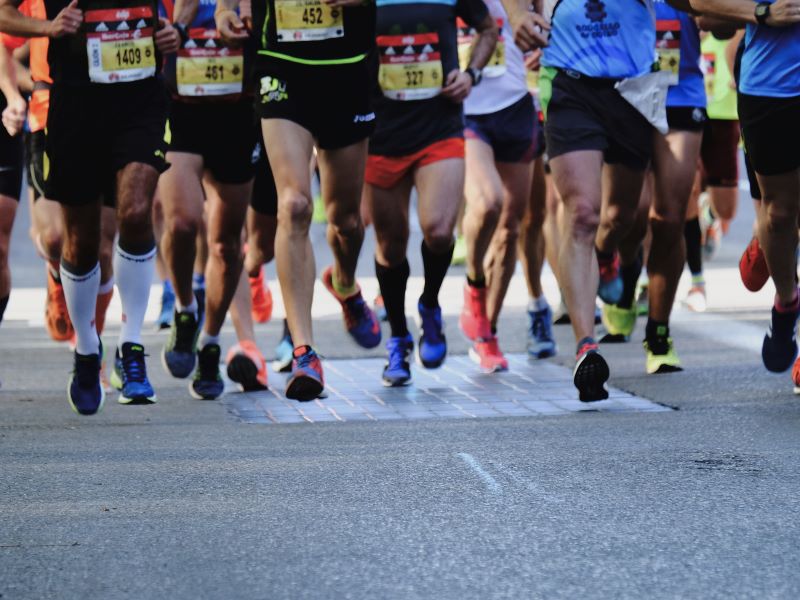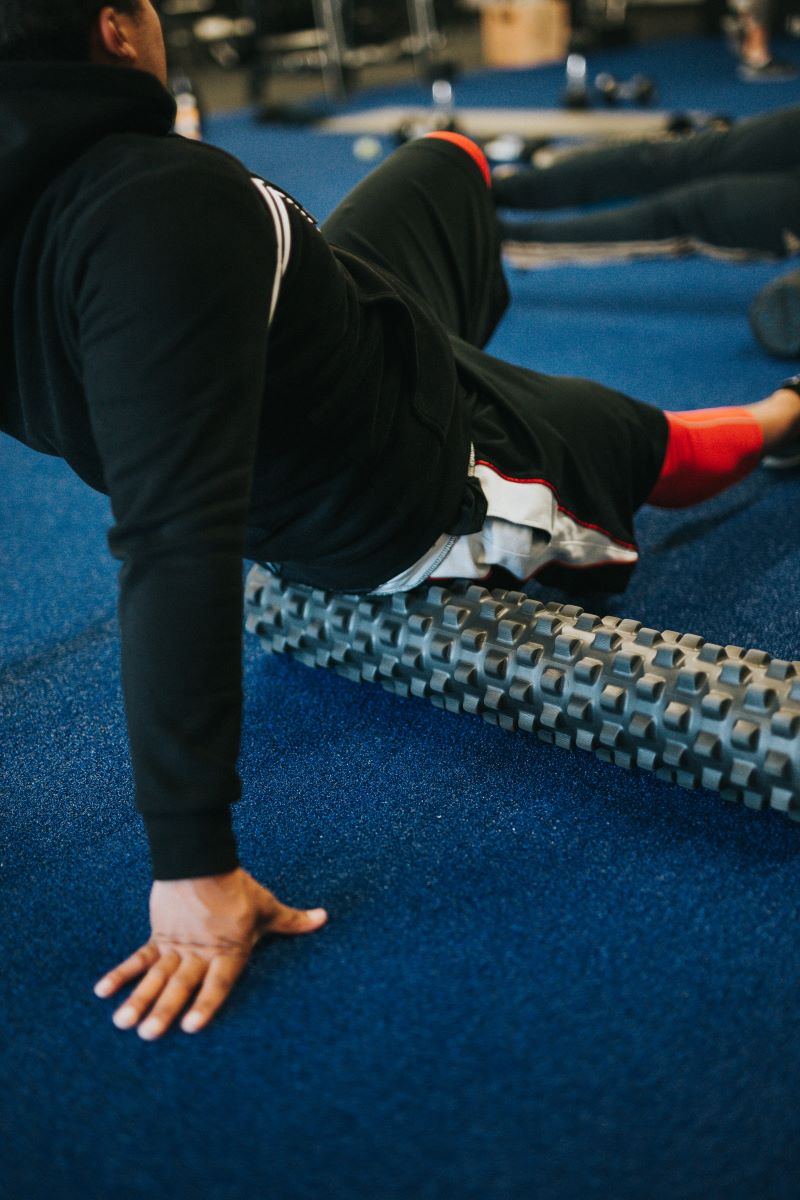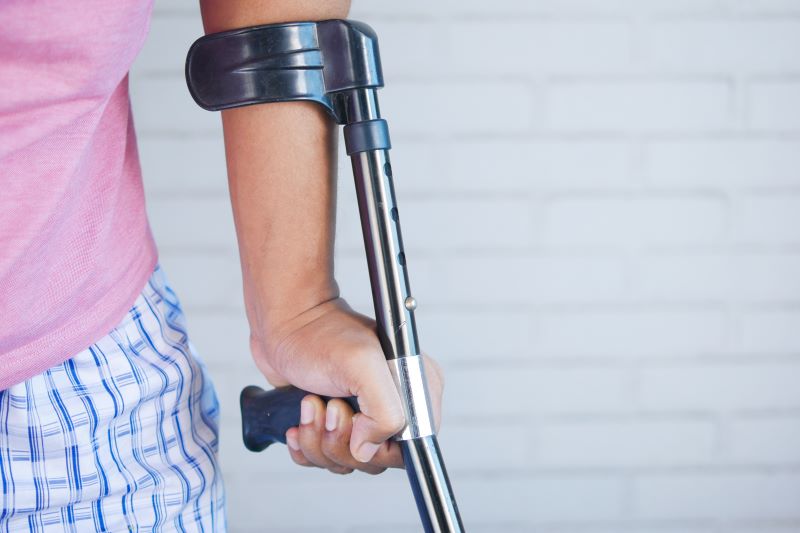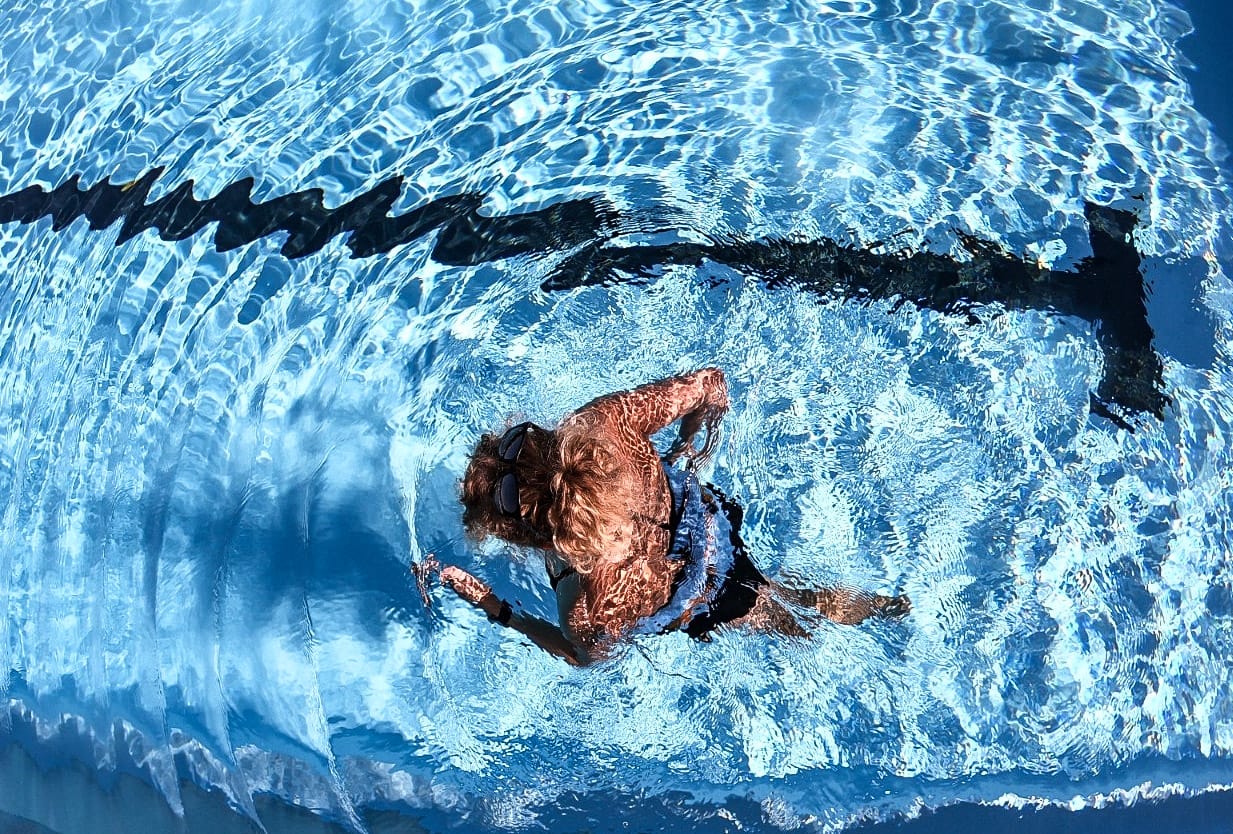The Hidden Danger of Missing Periods
- Home
- Blog
Click here to read in German/Hier geht es zur deutschen Version
The perfect end to Yvonne Van Vlerken’s triathlon career would have been in September 2020. After 20 years of winning national titles, completing 17 ironman triathlons in under nine hours and breaking world records, she announced to quit professional triathlon a year earlier, in 2019, to give herself time to recover from something she didn’t know was a problem: a missing menstrual cycle.
“I never got an injury and almost never went to the doctor,” Van Vlerken said. “But I didn’t have a menstrual cycle.”
And the consequences didn’t show until 2017. “There was no night I didn’t have hot flashes because the hormonal issues had gotten so bad. I was 39 and started getting menopause symptoms.”
Amenorrhea, which is the scientific term for a missing menstrual cycle, also seemed to interfere with her wish to get a child. “I wondered if I didn’t get my period, could I get a child? I realized that it couldn’t go on like this”, Van Vlerken said.
After visiting numerous doctors, many of her questions remained unanswered as her problems were put off as a result from her training for long-distance triathlon races. It wasn’t until she did research on her own that she realized her hormonal imbalances were not only due to large training volume. They were also because of her daily habit of doing fasted runs in the morning.
“Many coaches still recommend fasted runs, even though studies show that it is harmful to women,” Van Vlerken said. Referencing Dr. Stacy Sims, author of the book “ROAR”, she said that exercising in a fasted state puts the body under enormous stress. The body produces stress hormones by converting estrogen, testosterone and progesterone into cortisol.
“I started my own coaching program one and a half years ago,” said Van Vlerken. Fifty percent of the female athletes in her team were struggling with their menstrual cycle. “For some athletes, cutting out fasted training is the key to getting their cycle back.”
But not only fasted training is detrimental to women’s health. “Once your body gets into a relative energy deficiency, the body’s reproduction system is shut down,” she said.
A low energy intake, combined with amenorrhea and a low bone mineral density, make up the female athlete triad–a disorder that often remains unrecognized.
“It makes me sad that many young women don’t get the support from doctors that they would need,” says Van Vlerken.
Too often, they are sent away with a prescription for birth control pills, which will bring back the period. But few doctors realize that they are only treating one aspect of the triad. While it is said that birth control pills help maintain the bone mineral density, studies show that artificial hormones are not as efficient as the natural hormones produced by the body. With a persisting relative energy deficiency and a poor bone health, the female athlete triad can have devastating consequences for female athletes.
Lea Sophie Keim, an elite triathlete for Team Erdinger Alkoholfrei, was sidelined for several months in 2019 when she was dealing with a femoral neck stress fracture. She said the exact causes for her bone injury are complex and shouldn’t be generalized as they range from low bone density to low estrogen levels to chronical undereating. “Nutrition plays a really important role,” Keim said. “I had amenorrhea and was undereating. I didn’t take in enough calories.”
The results of a blood test revealed that her hormones were at a similar level as in women in their menopause. When she got a bone density scan earlier this year, she was diagnosed with osteopenia, the pre-stage to osteoporosis. With most races being cancelled due to the COVID-19 outbreak, she took this as a chance to give her body time to heal. While stress fractures and osteopenia are a common consequence of the female athlete triad, there are side effects that should not be taken lightly.
“I had a chronically low body temperature,” says Yvonne Van Vlerken. “My resting heart rate was around 32 or 34 and I was proud of it because I took it as a sign for physical fitness. But it was actually a sign that my metabolism had slowed down to adapt to the low energy intake.”
It’s a similar story for Lea Keim. “I felt like I was going to freeze when I was swimming in the outdoor pool,” she said. “My heart rate was low and I thought I was in great shape. But my body was just in an energy-saving mode.”
Since her decision to take a break from professional triathlon to focus on her health, she says that swimming in the outdoor pool doesn’t make her feel like “turning into a cube of ice” anymore. An increase in energy intake and decrease in training volume and intensity brought back her menstrual cycle. The third factor in the female athlete triad, a low bone mineral density, will take more time to recover from. “I will take a slow and steady approach to build up my training,” Keim said. “I also check my bone density on a regular basis.”
In the recovery process from osteopenia, she exercises regularly and integrates movement into her every-day life, but she stopped doing high-intensity training. While swimming and cycling make up most of her training, she won’t return to running until her bone health is restored. “I also take two full rest days a week and do yoga,” she said.
Both Yvonne Van Vlerken and Lea Keim agree that more people need to talk about the female athlete triad and its consequences. “I’m still trying to find a way to educate more people on this,” said Keim.
“A missing menstrual cycle is a sign that something is not right,” said Van Vlerken. “And it is dangerous that doctors fail to see the connection of a relative energy deficiency and amenorrhea.”
The miscommunication of possible consequences leads to a large number of untreated cases that might even result in irrevocable conditions such as osteoporosis and premature menopause.
Looking back at 20 years of professional triathlon, Yvonne Van Vlerken said: “I was always very happy about my athletic achievements and I’m really grateful. But the question of how fast I could have been with the right medical support will remain unanswered.”
The Hidden Danger of Missing Menstural Cycles
Das perfekte Ende von Yvonne Van Vlerkens Triathlonkarriere wäre im September 2020 gewesen. Nach zwanzig Jahren erfolgreicher Karriere, gefüllt mit nationalen Meisterschaftstiteln, 17 Ironmans in unter neun Stunden und zwei Weltrekorden, verkündete sie in 2019 – ein Jahr früher – den Profi-Triathlonsport hinter sich zu lassen. Der Grund: ein fehlender Zyklus.
“Ich war nie verletzt und war nie beim Arzt“, sagt Van Vlerken. „Aber ich hatte nie einen Zyklus.“
Die Folgen zeigten sich allerdings erst in 2017. „Es gab keine Nacht, in der ich nicht Hitzewallungen hatte, weil die hormonellen Probleme so schlimm geworden sind. Ich war 39 und hatte Wechseljahrsbeschwerden.“
Sekundäre Amenorrhoe, der medizinische Begriff für das dauernde Ausbleiben des Zyklus, kommt bei Sportlerinnen häufiger vor als oft erwartet. Je nach Studie sind zwischen 5 und 25 Prozent von Sportlerinnen betroffen. Dass die Folgen jedoch weitreichender sind als gedacht, wissen nur wenige.
Für Yvonne Van Vlerken schien die Amenorrhoe auch ihrem Babywunsch in die Quere zu kommen. „Ich habe mich gefragt, wenn ich keine Periode bekomme, kann ich ein Kind bekommen? Daraufhin habe ich erkannt, dass es so nicht weitergehen kann.“
Nach mehreren Arztbesuchen blieben jedoch weiterhin viele ihrer Fragen unbeantwortet. Ihr ausbleibender Zyklus wurde mit dem Leistungssport begründet, der den Körper unter Stress setzt. Aber erst als sie selbst zu recherchieren begann, erkannte sie, dass die hormonellen Dysbalancen nicht nur mit ihrem hohen Trainingsumfang zusammenhingen, sondern auch mit ihrem regelmäßigen Nüchterntraining.
„Viele Coaches empfehlen immer noch Nüchterntraining, obwohl Studien zeigen, dass sie für Frauen gefährlich sind“, sagt Van Vlerken. Laut dem Buch “ROAR” von Dr. Stacy Sims, bedeutet Nüchterntraining enormen Stress für den Körper. Es werden Stresshormone produziert, wofür der Körper Östrogen, Testosteron und Progesteron in Kortisol umwandelt.
„Ich arbeite seit anderthalb Jahren als Triathloncoach“, sagt Van Vlerken. Fünfzig Prozent der Mädchen in ihrem Team hatten Probleme mit ihrem Zyklus. „Für manche Athleten reicht es jedoch, das Nüchterntraining wegzulassen, um den Zyklus zurückzubringen.“
Aber nicht nur Training mit nüchternem Magen schadet dem weiblichen Zyklus, sondern auch eine dauerhaft zu geringe Energiezufuhr. „Sobald der Körper in ein relatives Energiedefizit gerät, wird das Reproduktionssystem heruntergefahren“, sagt Van Vlerken.
Ein Energiedefizit, kombiniert mit Amenorrhoe und einer niedrigen Knochendichte sind die drei Hauptaspekte des „female athlete triad“, auf Deutsch die „Triade der sporttreibenden Frau“. Oft bleibt die Kombination dieser drei Faktoren jedoch unerkannt.
“Es macht mich traurig, dass so viele jungen Frauen nicht die Unterstützung bekommen, die sie brauchen“, sagt Van Vlerken. Oft werden sie mit einem Rezept für Antibabypillen weggeschickt, welche die Periode zurückbringen. Aber nur wenige Ärzte erkennen, dass sie damit nur einen Aspekt der Triade behandeln. Während gesagt wird, dass die Pille zwar die Knochendichte erhält, zeigen Studien, dass künstliche Hormone dabei nicht genauso effektiv sind wie die Körpereigenen. Wenn ein Energiedefizit über längere Zeit bestehen bleibt, kann dies gemeinsam mit einer geringen Knochendichte gefährliche Auswirkungen auf Sportlerinnen haben.
Lea Sophie Keim, die als Triathletin für das Team Erdinger Alkoholfrei an den Start geht, war in 2019 für mehrere Monate wegen eines Ermüdungsbruchs im Oberschenkel außer Gefecht gesetzt. Die genauen Gründe für die Verletzung sind komplex und sollten nicht pauschalisiert werden, da sie sehr vielseitig sind. „Aber Ernährung spielt eine ganz große Rolle“, sagt Keim. „Ich hatte eine Amenorrhö und habe nicht genügend Kalorien zu mir genommen.“
Die Ergebnisse von einem Bluttest zeigten, dass ihre Hormone auf einem ähnlichen Level wie die einer Frau in den Wechseljahren waren. Als sie Anfang des Jahres eine Knochendichtemessung machen ließ, wurde bei ihr Osteopenie festgestellt, die Vorstufe zur Osteoporose. Deshalb beschloss sie, die ausgefallene Triathlonsaison 2020 zu nutzen, um ihrem Körper Zeit zu geben. Stressfrakturen und Osteopenie sind häufige Folgen der Triade der sporttreibenden Frau, wenn nicht vorher entgegengewirkt wird. Zusätzlich gibt es auch Begleiterscheinungen, die man ernst nehmen sollte.
„Ich hatte eine sehr niedrige Körpertemperatur“, sagt Yvonne Van Vlerken. „Meine Ruhepulsfrequenz lag bei 32 bis 34 Schlägen pro Minute und ich war stolz darauf, weil ich dachte, es wäre ein Zeichen körperlicher Fitness. Aber es war eigentlich ein Zeichen dafür, dass mein Stoffwechsel heruntergefahren war, um sich der niedrigen Energiezufuhr anzupassen.“
Lea Keim hatte ähnliche Erfahrungen. „Ich habe mich gefühlt, als würde ich gleich erfrieren, als ich im Freibad schwimmen war. Meine Herzfrequenz war niedrig und ich dachte, ich wäre gut in Form. Aber mein Körper war nur im Energiesparmodus.“
Seit ihrer Entscheidung, eine Pause vom Triathlonsport zu nehmen, um sich auf ihre Gesundheit zu konzentrieren, kann sie wieder im Freibad schwimmen, ohne sich fast „in einen Eisklotz zu verwandeln“. Eine erhöhte Energiezufuhr und weniger Intensität und Umfang im Training hat ihren Zyklus zurückgebracht. Der Aufbau der Knochendichte, der dritte Aspekt der Triade, wird mehr Zeit in Anspruch nehmen. „Ich werde einen langfristigen und grundlegenden Trainingsaufbau machen und erst 2021 die ersten Wettkämpfe machen“, sagt Keim.
Während sie ihre Knochendichte aufbaut, trainiert sie zwar regelmäßig und integriert leichte Bewegung in ihren Alltag, aber sie hat aufgehört, intensiv zu trainieren. Schwimmen und Radfahren machen den Großteil ihres Trainings aus, mit dem Laufen möchte Keim aber erst wieder anfangen, wenn die Osteopenie ausgeschlossen ist. „Ich mache außerdem zwei volle Ruhetage pro Woche und Yoga“, ergänzt Keim.
Sowohl Yvonne Van Vlerken und Lea Keim setzen sich dafür ein, Leute über das Thema aufzuklären. Vor allem im deutschsprachigen Raum wird wenig darüber gesprochen und sogar tabuisiert. Yvonne Van Vlerkens Artikel über Tabuthemen im Triathlon Magazin war der am meisten gelesene in 2019.
„Ein fehlender Zyklus ist ein Zeichen, dass etwas nicht stimmt“, sagt Van Vlerken. „Und es ist gefährlich, dass viele Frauenärzte die Zusammenhänge mit einem Energiedefizit nicht erkennen.“
Durch Fehlkommunikation von möglichen Folgen einer Amenorrhoe werden viele Frauen nicht so behandelt, wie es nötig wäre. Dies kann sogar zu irreversiblen Schäden führen, wie zum Beispiel Osteoporose oder zu frühe Wechseljahrsbeschwerden.
Wenn Yvonne Van Vlerken auf ihre 20 Jahre im Triathlonsport zurückschaut, sagt sie: „Ich war immer sehr zufrieden mit meiner Karriere und ich bin wirklich dankbar. Aber es bleibt die Frage, wie gut wäre ich gewesen, wenn ich die richtige Unterstützung von Ärzten gehabt hätte?“
Post Tags
About The Author
I did my first triathlon on a pink kid’s bike with training wheels at six years old. That’s where my love for the sport was born, but it took another decade until I figured out that I wanted to combine my passions for sports and writing.
Disclaimer
All resources and information shared on this website are only for informational purposes and aren’t intended to diagnose, treat, or cure any condition or disease.








